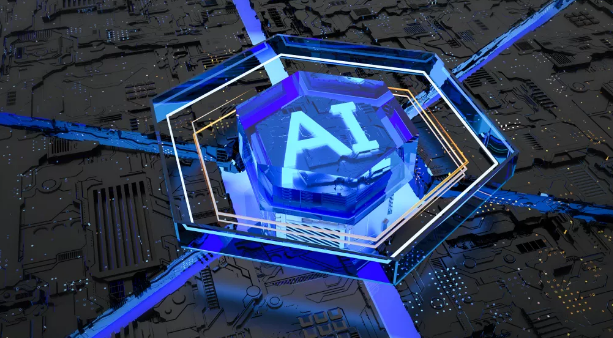Glass substrate: Ideal for AI chip manufacturing

AI chips are rushing forward with various industries, in order to let AI applications play a good performance, high efficiency, the selection of materials is the key, in a pile of materials, glass substrate slowly emerged, became one of the best AI chip manufacturing. With its special nature, it performs very well in chip integration, heat dissipation management, and photoelectric performance.
Thermal management performance. The work of the AI chip is not simple, the calculation task is very complex, and the work will generate a lot of heat. Thermal management is the key to ensure chip performance and reliability. The glass substrate plays an important role in this regard, and its heat conduction performance is very good. Compared with traditional silicon-based materials, the glass substrate can effectively reduce the temperature of the chip during operation, which improves the efficiency of calculation and extends the service life.
And the coefficient of thermal expansion of the glass is relatively low, which means that when the temperature changes, the size of the glass substrate does not change much, which can help reduce the stress caused by the temperature difference, so the failure rate is further reduced. This feature is too important in the case of fast computing and long-term high load operation of AI chips.
Compatibility and variety. AI technology is advancing all the time, and the design and manufacturing requirements for chips are increasingly diverse. The glass substrate is quite good in terms of compatibility with different materials and processes. Its surface is specially treated so that it can be tightly combined with metals, ceramics and other high-performance materials. Whether it is multi-layer integrated circuits, or complex packaging processes, glass substrates can provide top support.
In addition, the glass substrate has great flexibility in size and shape design, and chip manufacturers can customize it according to different application needs, which can promote innovation and make development more diversified. This flexibility is good, both to adapt to the growing number of AI application needs, but also to help achieve more complex chip architectures.
Then there is the photoelectric performance. The application scenarios of AI chips are becoming more and more extensive, and the integration of optoelectronic functions has become particularly important. Glass substrate has advantages in photoelectric performance, which is an ideal choice for optical device integration. The glass not only has high transparency, but also good optical purity, and can effectively reduce light loss during photoelectric conversion. This makes glass-based chips particularly useful in areas such as machine vision and optical communications.
In addition, the surface of the glass substrate can be treated with various optical coatings, which can make its optical performance in a specific wavelength range stronger. These characteristics allow the glass substrate to meet the needs of high-speed optical interconnection and other optoelectronic integration functions that may appear in the future, and bring a broader world to the development of AI technology.
About manufacturing feasibility and cost effectiveness. The manufacturing process of glass substrate is becoming more and more mature, and the preparation process is relatively simple. This makes mass production easier and manufacturing costs lower. Moreover, the chemical stability of the glass substrate is high, and the required performance can be maintained in a more intense environment, and the loss of the material is less in the manufacturing and use process. In terms of environmental protection, the glass substrate can be recycled, which can give it a lot of points. Compared with traditional materials, glass substrates are relatively environmentally friendly during production and use, helping to form a more sustainable manufacturing chain. This advantage makes it more competitive in the future market.
Finally, the potential for future development. As AI technology continues to develop, the function and performance requirements of chips continue to rise. In this case, the glass substrate as an ideal choice for AI chip manufacturing, its potential will be further tapped out. In the future, more research will focus on how to optimize the performance of glass substrates to meet higher technical standards and market demand.
For example, researchers are considering adding minerals and chemical components to further improve the performance of glass substrates, achieving higher heat resistance and greater mechanical strength. In addition, new technologies such as nanostructure design and functional surface treatment of glass substrates have slowly begun to be used in products, bringing more possibilities to the performance improvement of AI chips.
관심을 가질만한 제품
 |
TPCM-2.4-5 | CMC 2.41MH 5A 2LN TH | 6894 More on Order |
 |
62045-P2S02 | XFRMR TOROIDAL 10VA CHAS MOUNT | 2430 More on Order |
 |
62044-P2S02 | XFRMR TOROIDAL 10VA CHAS MOUNT | 6048 More on Order |
 |
62034-P2S02 | XFRMR TOROIDAL 7VA CHAS MOUNT | 7938 More on Order |
 |
62025-P2S02 | XFRMR TOROIDAL 5VA CHAS MOUNT | 3924 More on Order |
 |
62021-P2S02 | XFRMR TOROIDAL 5VA CHAS MOUNT | 5058 More on Order |
 |
62012-P2S02 | XFRMR TOROIDAL 3.2VA CHAS MOUNT | 3204 More on Order |
 |
62075-P2S02 | XFRMR TOROIDAL 35VA CHAS MOUNT | 7308 More on Order |
 |
62073-P2S02 | XFRMR TOROIDAL 35VA CHAS MOUNT | 5292 More on Order |
 |
70074K | XFRMR TOROIDAL 35VA THRU HOLE | 6840 More on Order |
 |
70043K | XFRMR TOROIDAL 10VA THRU HOLE | 5562 More on Order |
 |
70041K | XFRMR TOROIDAL 10VA THRU HOLE | 2826 More on Order |
 |
70031K | XFRMR TOROIDAL 7VA THRU HOLE | 8658 More on Order |
 |
70024K | XFRMR TOROIDAL 5VA THRU HOLE | 8748 More on Order |
 |
70015K | XFRMR TOROIDAL 3.2VA THRU HOLE | 7578 More on Order |
 |
70014K | XFRMR TOROIDAL 3.2VA THRU HOLE | 5562 More on Order |
 |
70013K | XFRMR TOROIDAL 3.2VA THRU HOLE | 4392 More on Order |
 |
70011K | XFRMR TOROIDAL 3.2VA THRU HOLE | 7560 More on Order |
 |
62015-P2S02 | XFRMR TOROIDAL 3.2VA CHAS MOUNT | 3780 More on Order |
 |
70025K | XFRMR TOROIDAL 5VA THRU HOLE | 4068 More on Order |
 |
62084-P2S02 | XFRMR TOROIDAL 50VA CHAS MOUNT | 7284 More on Order |
 |
AC1015 | CURR SENSE XFMR 15A T/H | 5166 More on Order |
 |
AC1010 | CURR SENSE XFMR 10A T/H | 5963 More on Order |
 |
AC1025 | TRANSFORMER CURRENT 25.0 AMP | 4230 More on Order |









